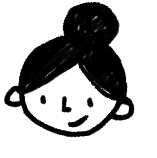Making practice playful
This is part 2 of a three-part mini series on practice.
Read part 1: "My personal learning curve"
Read part 3: "A basic structure for practice"
OK, you get it. Practice is the key. So let’s take a look at how you can start and keep practicing, how to make it enjoyable and how to get the most out of your practice.
As children, we learn through play. And although we often think that we have to be serious as adults, especially at work, playing is often more efficient for creative tasks and for learning things. When we play, we are relaxed, we have fun and we are more open to experiment and to take risks.
Having fun loosens up our brain and our body so that the mind and hand can move around the paper with more ease. Let’s do a quick experiment right now to see what I mean: Close you eyes and think about a recent situation when you were happy or that you enjoyed. Now move your head a bit from left to right. Notice how the movement feels.
Now think of a recent situation when you were stressed or angry or a problem you currently have. Now try and move your head again. Is there a difference in the ease and range of movement?
Noticed a difference?
Being positive and relaxed literally allows our body and mind to move more freely. So try to make your practice fun, try not to judge if what you are doing is good. Just do and enjoy what you discover.
Getting started
The biggest hurdle to a regular practice is getting started. We all love to procrastinate. To make it easier to get started, I like to give my self simple concrete tasks for my practice. This means I don’t have to think about what to do, but can jump right in. Over the years, I had different practice topics I kept for a few weeks before switching focus.
Here are some examples of simple exercises that I have used for practice. Maybe you like them as well:
Making things out of shapes
Take a piece of paper and fill it with circles. Leave a bit of space between the circles.
Now, make an object or person out of every circle by adding details in and around it. The first circles are probably easy, but after ten or twelve it gets a bit harder to think of new objects. Keep going though, until you made something out of every circle on your paper.
You can do variations of this exercise by using different shapes (squares, rectangles and triangles), by varying the size of the shapes on the paper (it’s interesting to try out if different sizes trigger different associations. We usually don’t play with size enough when sketching, we mostly stay in our fairly stable comfort zone) and by mixing different shapes on the same sheet.
I also love using random shapes, like stains from tea bags, coffee cups, bleeding markers or just randomly scribbled squiggles.
Lettering
Want to practice your lettering, but never can think of words to doodle? Subscribe to a “Word of the Day” email newsletter of a dictionary (the oxford dictionary does a good one) and use it as the basis of your daily practice. You can practice different lettering styles each day or try to match the shape of the letters to the meaning of the word. Added bonus: you learn the meaning of a lot of words that you probably never heard of.
Random fun
If you feel like moving on to some more complex exercises after having covered the basics like objects, people and lettering separately, here’s a fun little tool to use: a random sentence generator that spits out weird little stories for you to sketch. You can find it at www.sketchnotesbook.com/doodlebreak
It’s a fun challenge to try and sketch these strange situations and it’s surprising how wide ranging the sketches are when different people tackle the same sentence. Try it out with your friends and swap notes!
This is part 2 of a three-part mini series on practice.
Read part 1: "My personal learning curve"
Read part 3: "A basic structure for practice"




